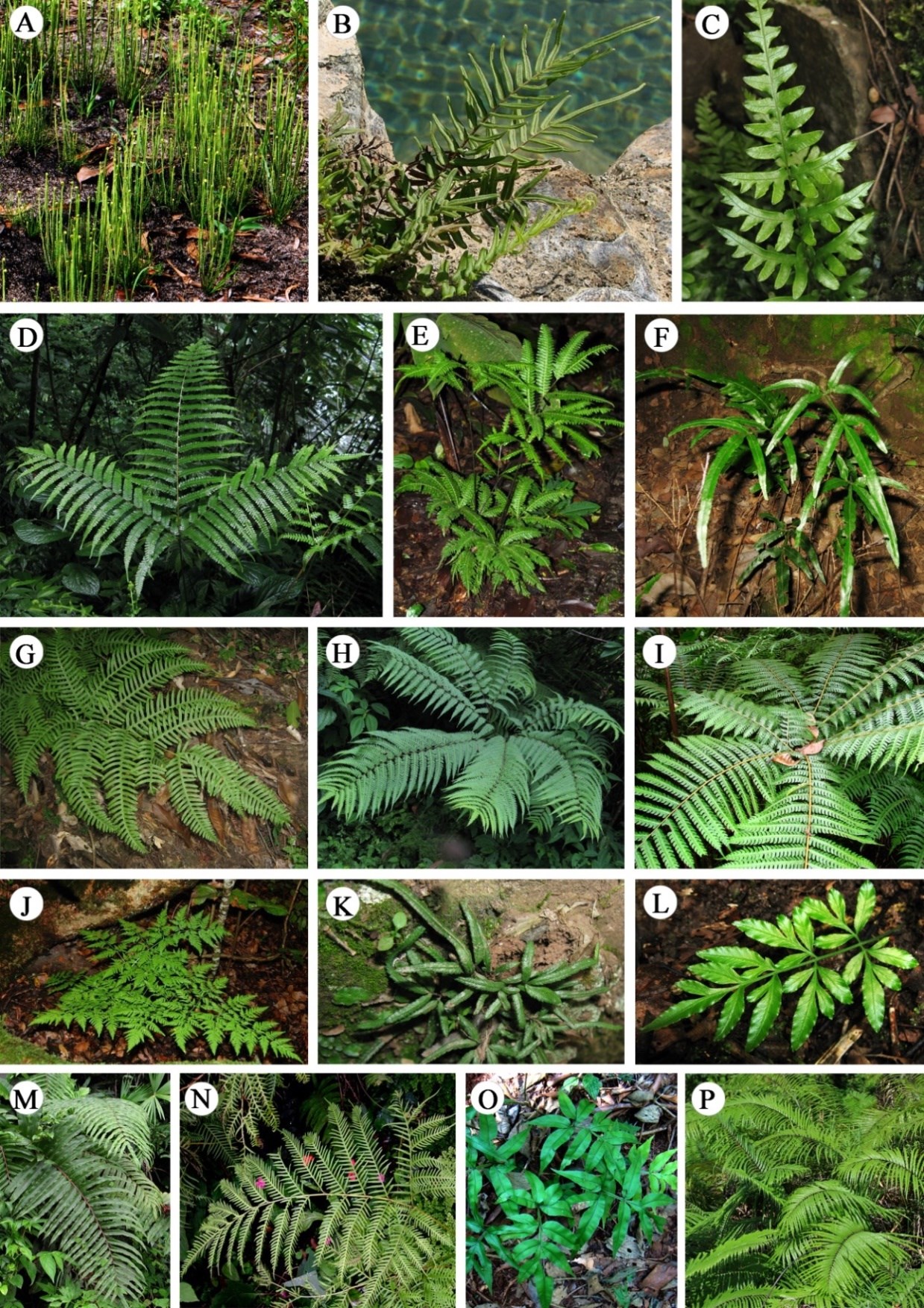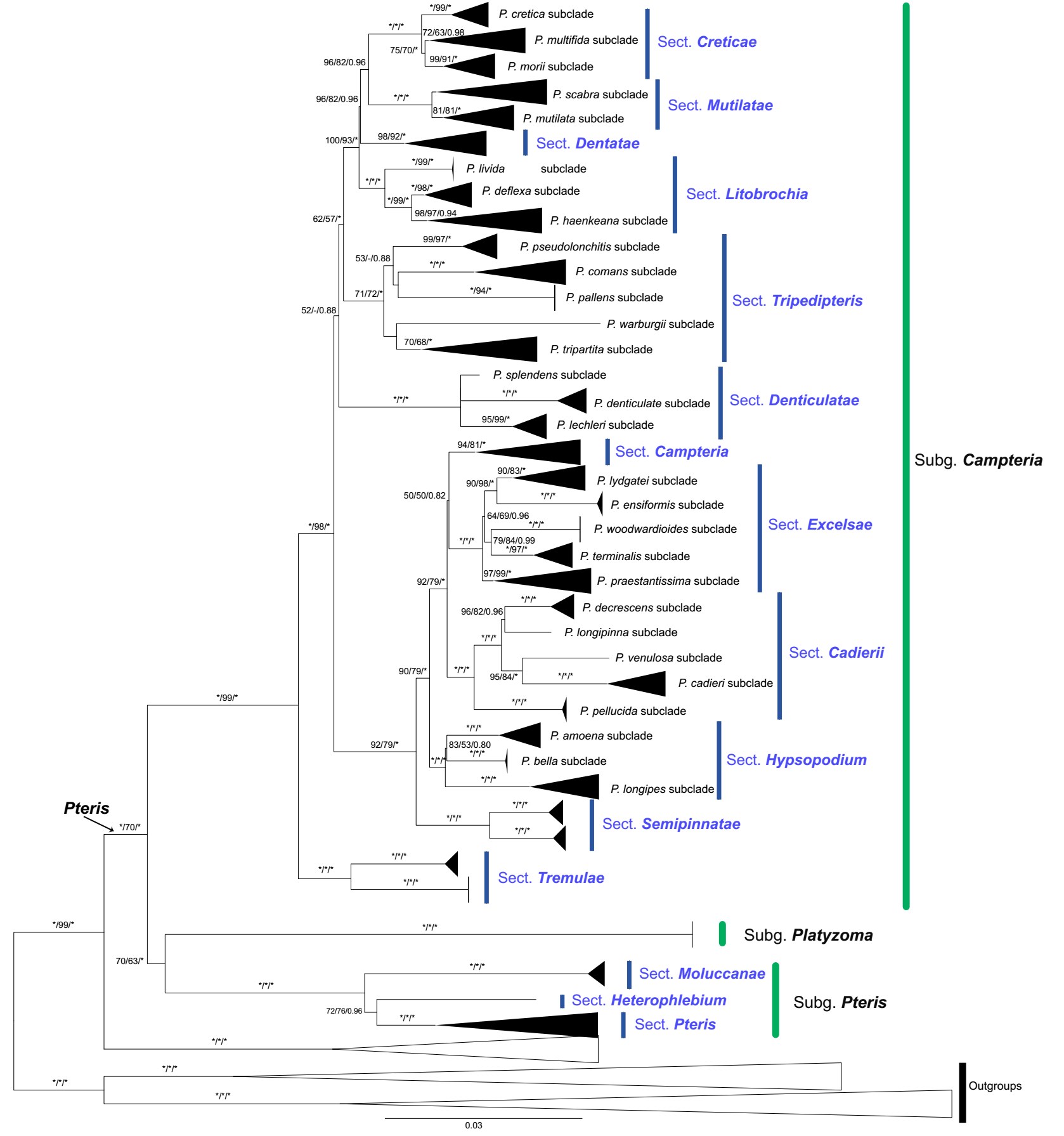From open slopes to dense forests; from acid soils to limestone rock, the habitats of Pteris are diverse, and the genus includes considerable morphological variation (figure 1). Some species of the genus have long been used as ornamental plants (e.g., cultivars of P. cretica), as arsenic hyperaccumulators (e.g., P. vittata), and also as foods (e.g., P. wallichiana).
The taxonomic delimitation and the infrageneric classification of Pteris had not been clear in the long history of its study. In the 19th century, species recognized nowadays in Pteris were treated in different taxa. A widely adopted delimitation of Pteriswas gradually formed. In the 20th century with Campteria, "Eupteris", and Lithobrochia included within Pteris.
Recent molecular studies of Pteris and the related groups contributed to the recognition of a monophyletic Pteris and the phylogenetic relationships of some genera closely related with Pteris were clarified. The inclusion of Afropteris, Neurocallis,Ochropteris, and Platyzoma in Pteris was supported based on the results from plastid data.
However, previous studies were either based on plastid data only or based on both plastid and nuclear data but the sampling was small. In addition, an infrageneric classification of Pteris based on morphological and molecular evidence has not been available yet.
Recently, research teams led by Dr. SUN Hang from the Kunming Institute of Botany, Chinese Academy of Sciences (KIB/CAS), and ZHANG Libing from Missouri Botanical Garden (MO), reconstructed a global phylogeny of Pteris (figure 2) based on molecular data of eight plastid markers and one nuclear marker (gapCp) of 256 accessions representing ca. 178 species of Pteris.
The 15 major clades identified earlier are recovered here and a new major clade is further identified. The nuclear phylogeny recovered 11 of these 16 major clades, seven of which are strongly supported.
The monophyly of Pteris including Afropteris, Neurocallis, Ochropteris, Platyzoma, and Schizostege but excludingActiniopteris and Onychium is strongly supported in this study. The inclusion of Schizostege in Pteris is confirmed for the first time.
Based on the newly reconstructed phylogeny and evidence from morphology, distribution, ecology, Pteris is classified into three subgenera: P. subg. Pteris, P. subg. Campteria, and P. subg. Platyzoma. The former two are further divided into three and 12 sections, respectively.
The fern genus Pteris was published by Linnaeus in 1753. The genus containing ca. 200 to 250 species, is distributed throughout the tropical, subtropical, and temperate areas of all continents except Antarctica.This study entitled Phylogeny and systematics of the brake fern genus Pteris (Pteridaceae) based on molecular (plastid and nuclear) and morphological evidence has been published in Molecular Phylogenetics and Evolution.
Contact:
YANG Mei
General Office
Kunming Institute of Botany, CAS
Email: yangmei@mail.kib.ac.cn
(Editor: YANG Mei)






